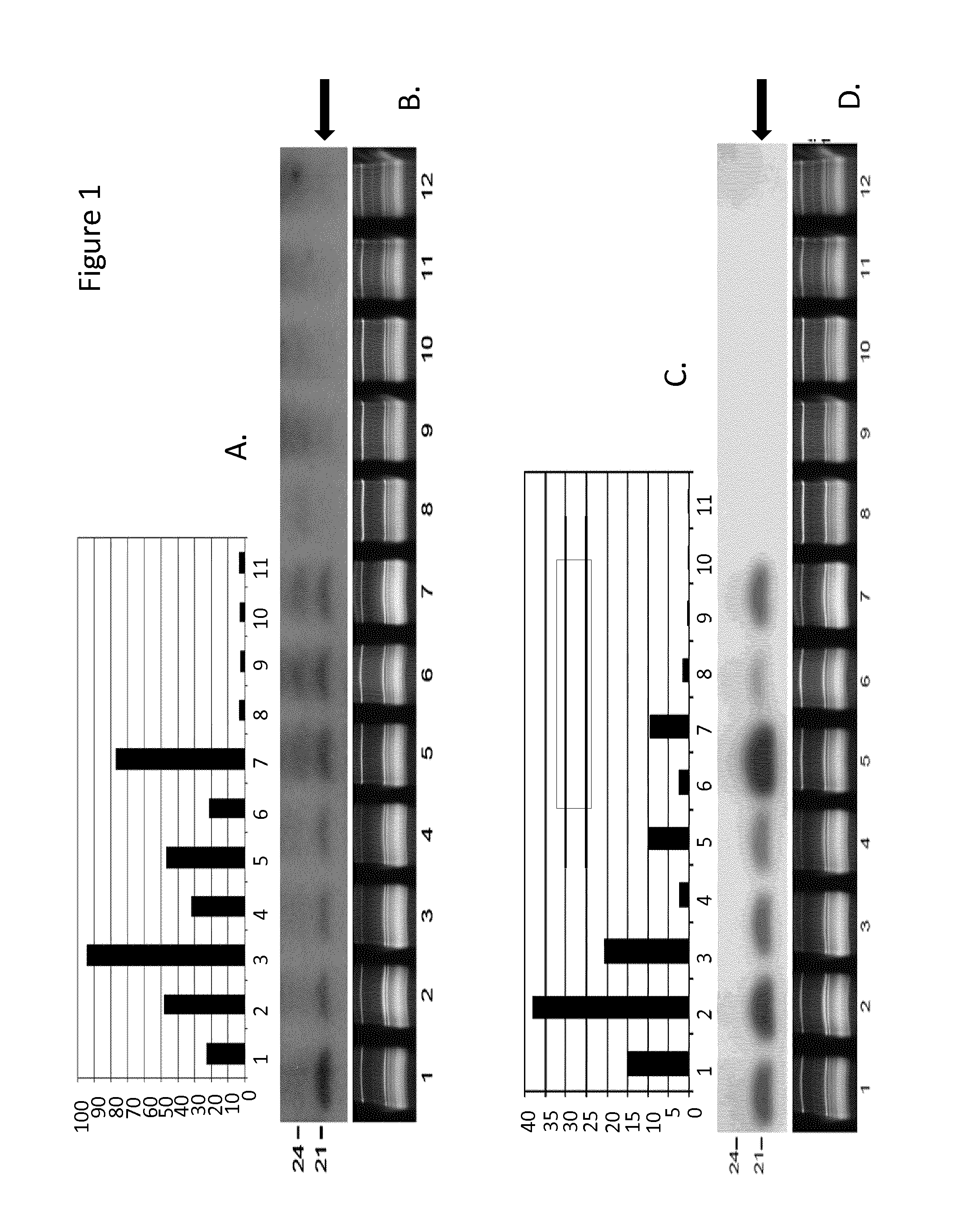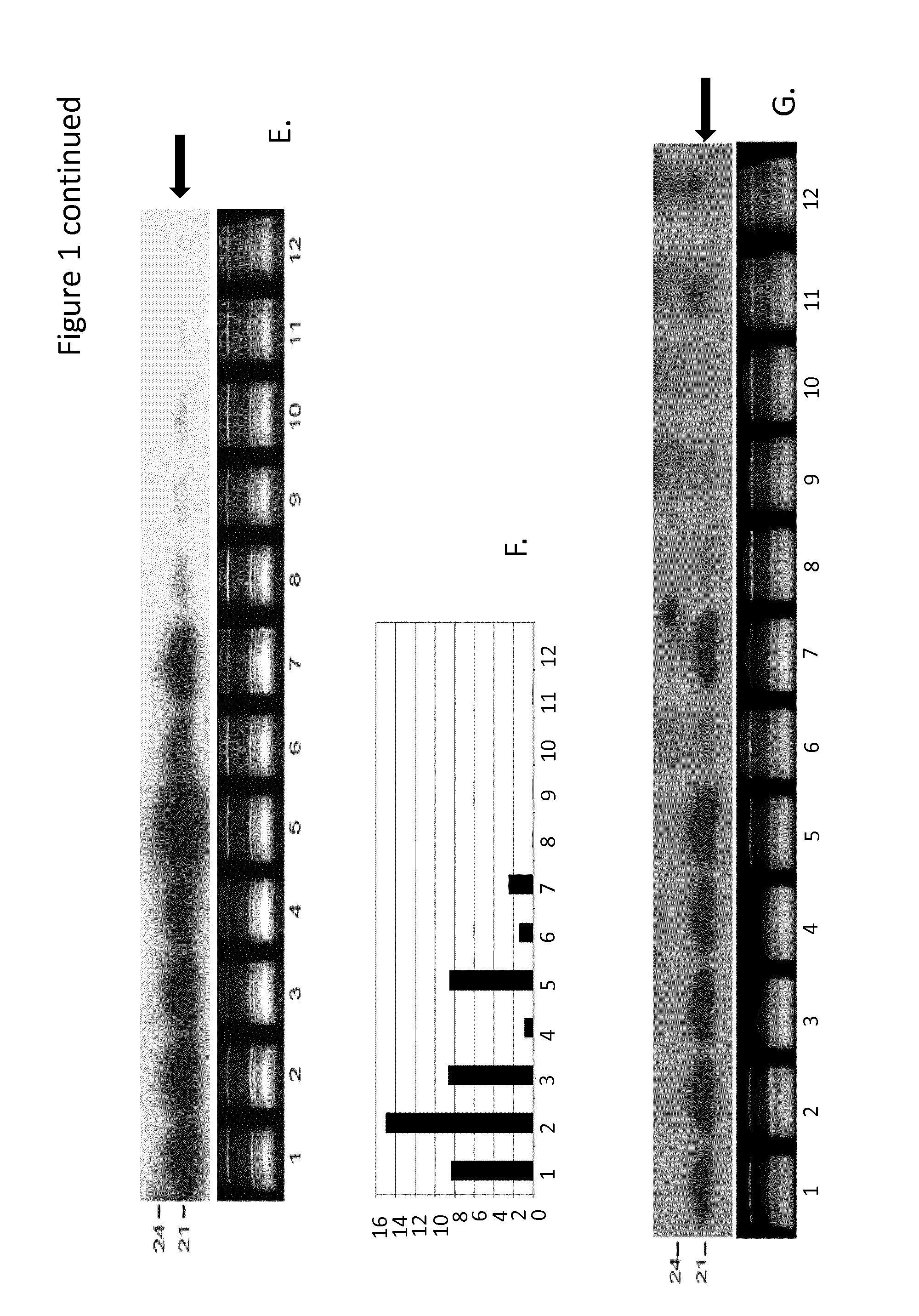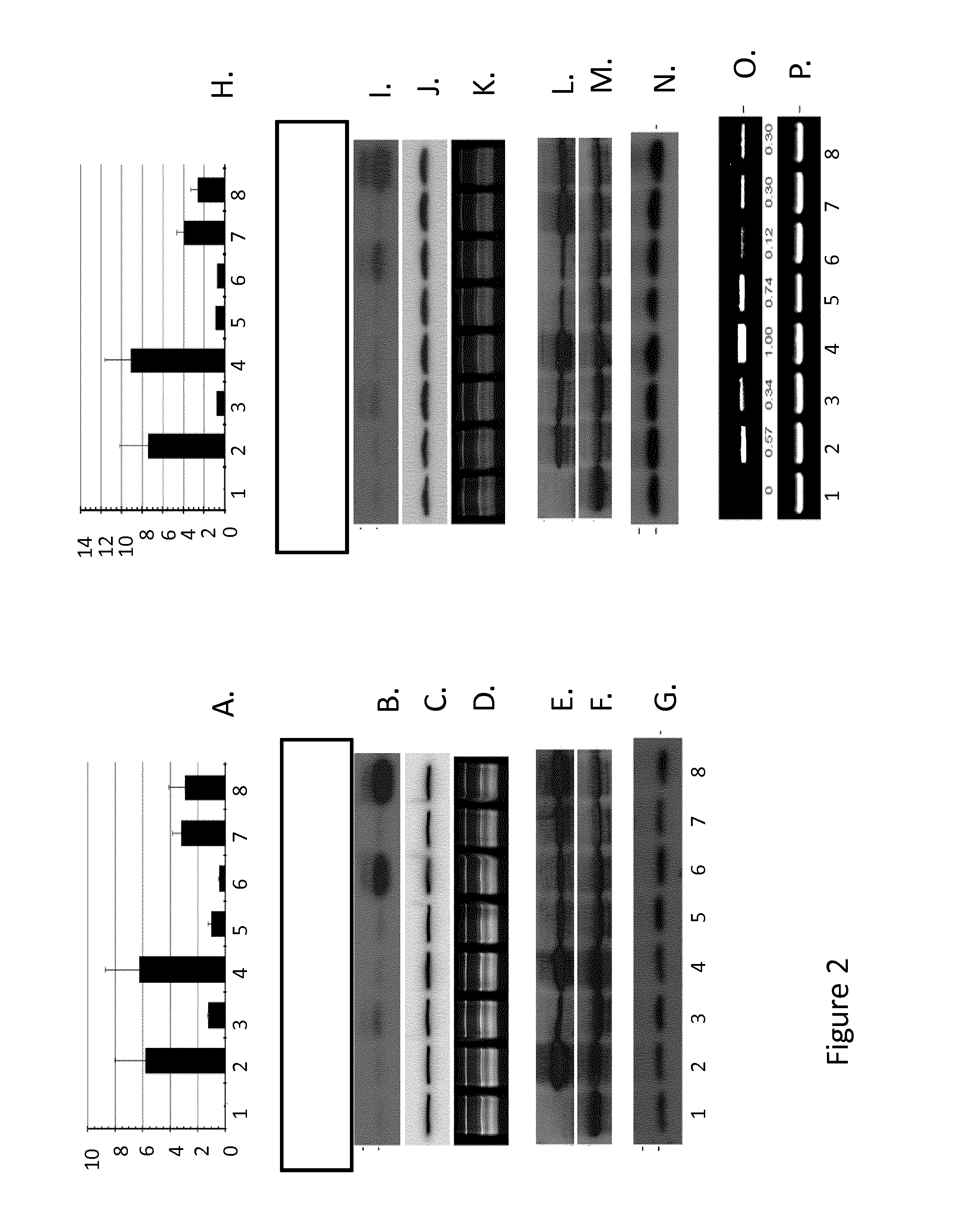Enhanced selective expression of transgenes in fiber producing plants
a technology of selective expression and fiber, applied in the field of agricultural biotechnology, can solve the problems of inability to fully understand the control of gene expression by these factors, natural cellulose containing fibers, and transgenic plants that usually exhibit some reduced growth, so as to increase the selectivity of fiber-selective expression
- Summary
- Abstract
- Description
- Claims
- Application Information
AI Technical Summary
Benefits of technology
Problems solved by technology
Method used
Image
Examples
example 1
Materials and Methods
[0148]Total RNA Extraction and Small RNA Fractionation.
[0149]Total RNAs including the low molecular weight (LMW) RNA fraction were extracted from plant materials and sRNAs were isolated by 17% polyacrylamide gel electrophoresis (PAGE) essentially as previously described [Qi, X., Bao, F. S., and Xie, Z. (2009). Small RNA deep sequencing reveals role for Arabidopsis thaliana RNA-dependent RNA polymerases in viral siRNA biogenesis. PLoS One 4, e4971].
[0150]Small RNA Library Construction and Illumina Sequencing.
[0151]PAGE-purified small RNAs were used for custom small RNA library construction essentially as described previously [Qi et al. supra], except that the 5′ RNA adapter does not include any custom index sequences. PAGE-purified cDNAs for each small RNA library were submitted for sequencing on Illumina's Hi-Seq2000 instrument.
[0152]Plasmid Constructs and Transient Expression Assay.
[0153]All binary vectors were constructed using the backbone of pCB302 [Xiang, C...
example 2
Identification and Experimental Validation of miRNAs with Desired Expression Patterns
[0162]Utilization of currently available “tissue-specific promoters” in plant genetic engineering does not always lead to satisfactory outcomes due to “leaky” expression of transgenes outside the desired expression domains. To achieve enhanced tissue- and developmental stage-specific expression of transgenes for genetic engineering of cotton fiber, we use endogenous microRNA (miRNA)-based strategy to eliminate the undesired transgene expression outside the developing cotton fiber. Specifically, when a transgene of interest is engineered with an interaction site for an endogenous miRNA, expression of the transgene would be repressed by such a miRNA when their expression domains overlap spatially or temporally. Endogenous miRNAs that are absent in the developing fiber but are expressed in other tissues could therefore be used as natural agents to knock-down undesired transgene expression outside the f...
example 3
Validation of miR403-Mediated Repression of LUC Reporter in a Transient Assay System
[0168]Although multiple miRNAs may be considered for use as a natural agent for clearance of undesired transgene expression in the non-fiber tissues in cotton, we have chosen miR403 as the first subject for further experimental validation due to its conserved nature and well-established interactions with its target in Arabidopsis. Briefly, miR403 is a semi-conserved plant miRNA that has been found only in the dicotyledonous species [Cuperus, J. T., Fahlgren, N., and Carrington, J. C. (2011). Evolution and functional diversification of MIRNA genes. Plant Cell 23, 431-442]. In Arabidopsis, miR403 has been shown to target the 3′ untranslated region (3′ UTR) of mRNA for ARGONAUTE2 (AGO2), one of 10 AGO family proteins in this reference plant species [Jones-Rhoades, M. W., Bartel, D. P., and Bartel, B. (2006). MicroRNAs and their regulatory roles in plants. Annu Rev Plant Biol 57, 19-53; Vaucheret, H. (20...
PUM
| Property | Measurement | Unit |
|---|---|---|
| Selectivity | aaaaa | aaaaa |
Abstract
Description
Claims
Application Information
 Login to View More
Login to View More - R&D
- Intellectual Property
- Life Sciences
- Materials
- Tech Scout
- Unparalleled Data Quality
- Higher Quality Content
- 60% Fewer Hallucinations
Browse by: Latest US Patents, China's latest patents, Technical Efficacy Thesaurus, Application Domain, Technology Topic, Popular Technical Reports.
© 2025 PatSnap. All rights reserved.Legal|Privacy policy|Modern Slavery Act Transparency Statement|Sitemap|About US| Contact US: help@patsnap.com



